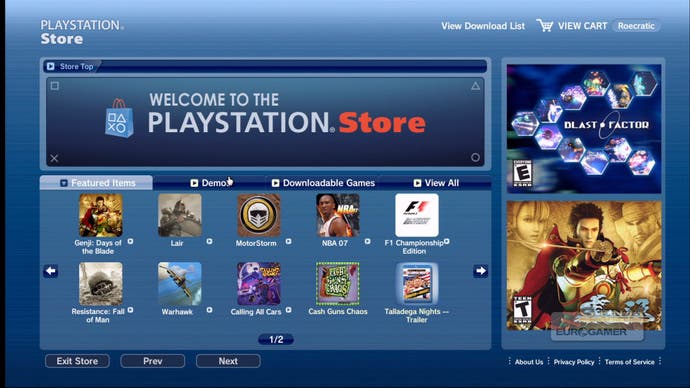System Update
How the current generation has redefined itself through firmware.
The internet has broken the traditional hardware cycle. Whereas consoles were once fixed immovable creations, mostly unchanged until their corporate overlords deemed them obsolete, the seventh generation has used always-on broadband connectivity to tweak and change the user experience. New features no longer have to wait on the drawing board to be implemented in some expensive motherboard revision, but can be poured down the datapipes directly into the console.
This year may bring Project Natal and PlayStation Move, adding credence to the popular wisdom that instead of a new console we'll be getting new ways to play with the existing hardware, but these are machines that have already been in a state of constant evolution since launch.
The Xbox 360 hadn't even been on sale for two months before it received its first major system update, on 30th January 2006, though this was more of a housekeeping call than a step forward in functionality. You could now delete a profile without losing the saved games associated with it, for instance, a tweak that was hardly likely to register with most players. Even so, it showed just how easily minor changes could be made to the console's OS. Things that would have remained a constant irritation in years previous could now be eliminated with a quick patch.

With its rivals still almost half a year from market, June 2006 brought the 360's first noticeable update, enabling multiple background downloads, the option to boot directly to whatever game is in the disc drive and the ability to resume DVD playback. The Marketplace also got a minor lick of paint. Still relatively minor amendments, but by now gamers were starting to realise that the features of new consoles would be in a constant state of flux.
October brought another update, and it's no surprise that with the arrival of both the PlayStation 3 and Wii then imminent, changes began to be more aggressive. 1080p video output was introduced, along with support for the external HD-DVD drive. Behind-the-scenes fixes were limited in their power to sway potential purchasers, so a long game of one-upmanship between Microsoft and Sony began.
It didn't take long for the fundamental difference in approach to become clear though. In its first year on sale the 360 received seven mandatory system updates. By the time the PlayStation 3 celebrated its first birthday it had clocked up 19.

The vast majority of these were tiny fixes, making seemingly invisible improvements to functionality, stability and security. USB webcam support came in February 2007, followed by background downloading in early March. That update also brought folding@home, the distributed computing application that allowed idle consoles to crunch data related to protein folding, vital to medical research. Pointless, argued some gamers, who felt that such lofty ideals didn't impact on their gaming. As an illustration of the multitasking that the new console generation would be expected to perform, however, it was an interesting case study.
The Wii had already made a point of stepping out of the technological arms race that Microsoft and Sony had thrown themselves into, but even this relatively low-tech competitor made immediate use of the wireless world. The Internet Channel was briefly available for free after the console's launch, while the Everybody Votes channel followed soon after in February 2007. Baby steps, certainly, but a clear indication that social networking - even of the most rudimentary kind - was considered an important part of a new console's make up.

